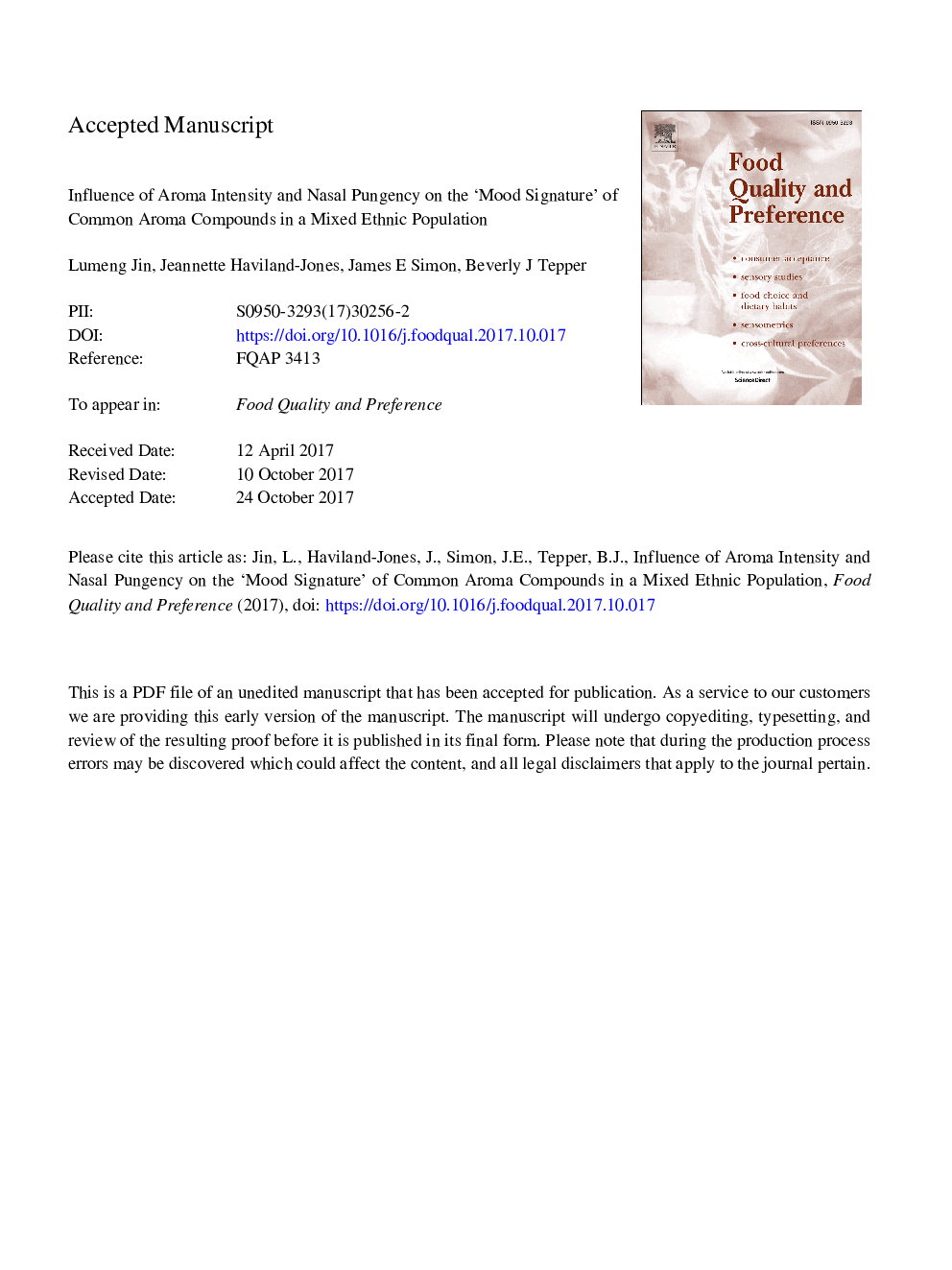| Article ID | Journal | Published Year | Pages | File Type |
|---|---|---|---|---|
| 8838550 | Food Quality and Preference | 2018 | 36 Pages |
Abstract
Aromas evoke moods that influence the acceptability of foods and other consumer products. This study examined the influence of nasal pungency and aroma intensity on liking of pure aroma compounds, and their impact on mood using the “mood signature” approach. We studied 95 healthy, young adults (65 female; 30 male) who orthonasally sampled cinnamaldehyde, methyl cinnamate, citral, citronellol, geraniol, and phenyl ethyl alcohol (PEA) at low (rangeâ¯=â¯1-2.5â¯ppm) and mid-range concentrations (rangeâ¯=â¯4-100â¯ppm), in two separate sessions. For each sample, they rated aroma intensity, (pungency, for the mid-range concentrations only) and overall liking using 15-cm line scales. They also selected from a list of 9 terms, the descriptor that best matched the “mood” of each aroma. At both concentrations, methyl cinnamate was the least liked (pâ¯<â¯.05-.003). At midrange concentrations, cinnamaldehyde, geraniol and methyl cinnamate were the most pungent, followed by citral, PEA, and citronellol (pâ¯<â¯.001); this same pattern was observed for aroma intensity suggesting that pungency contributed to overall aroma intensity. Most aromas had positive mood signatures except for methyl cinnamate, which evoked a mix of positive and negative moods. The mood signatures of cinnamaldehyde, and geraniol shifted from 'calm-relaxed' at low concentrations to 'excited-energized' at mid-range concentrations (pâ¯<â¯.01-.001) in concert with their pungencies. The less pungent compounds, citronellol and PEA evoked 'calm-relaxed' mood at both concentrations. We found that pungency altered the arousal properties of pleasant aromas. The mood signature approach may be useful for tracking shifts in mood with changes in pungency and aroma intensity.
Keywords
Related Topics
Life Sciences
Agricultural and Biological Sciences
Food Science
Authors
Lumeng Jin, Jeannette Haviland-Jones, James E. Simon, Beverly J. Tepper,
